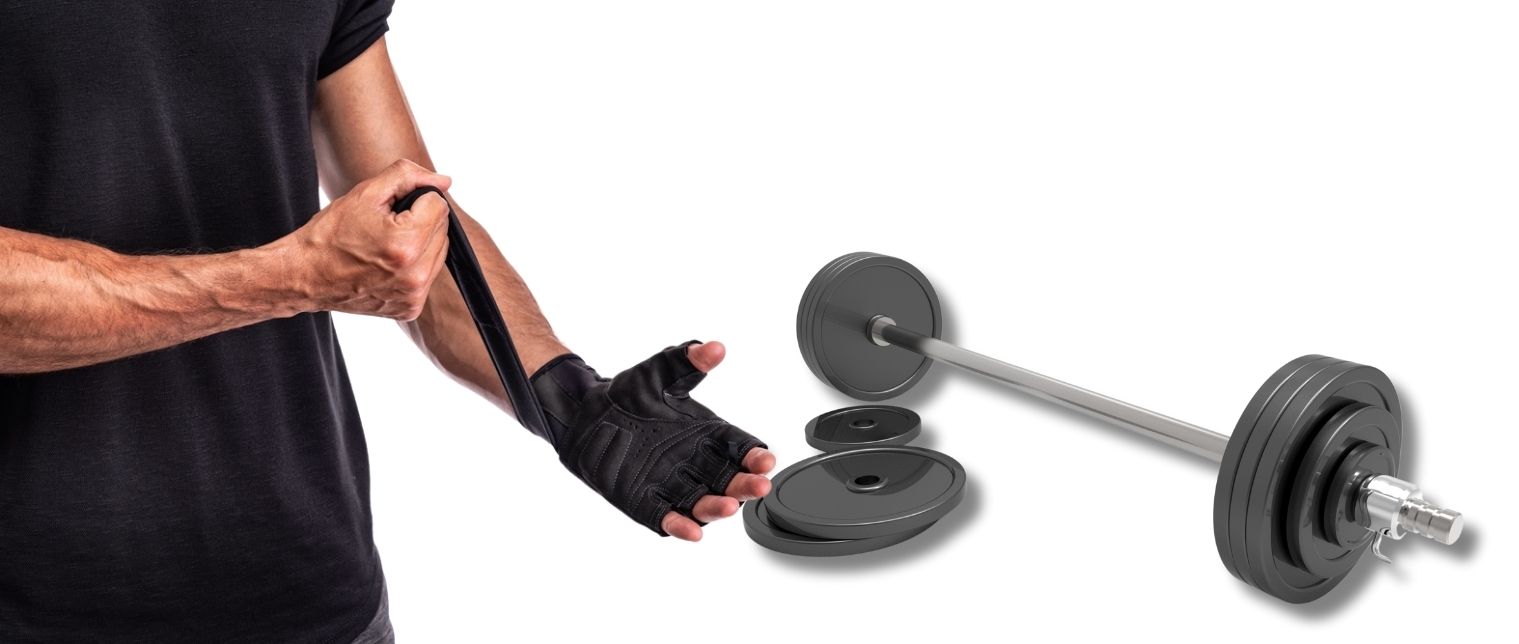The Great Debate – Gloves or Bare Hands?
When it comes to weightlifting, one of the most debated topics among fitness enthusiasts is whether to use weight lifting gloves or stick to bare hands. Some swear by gloves for comfort and grip, while others argue that lifting without gloves strengthens the hands and improves grip naturally. This comprehensive guide will analyze the pros and cons of both approaches to help you determine what’s best for your training needs.
Benefits of Weight Lifting Gloves
1. Improved Grip Strength and Stability
One of the primary reasons lifters opt for gloves is enhanced grip stability. Gloves provide extra friction and prevent the barbell or dumbbell from slipping out of your hands, especially when sweating. The added grip can help lifters maintain control and focus on their form without worrying about grip failure.
2. Protection Against Calluses and Blisters
Lifting weights with bare hands can lead to calluses and blisters, which may become painful over time. Weight lifting gloves provide a protective layer, reducing friction and minimizing the formation of rough, hardened skin. This is particularly beneficial for those who lift heavy and frequently.
3. Wrist Support and Injury Prevention
Many weight lifting gloves come with built-in wrist support, which helps stabilize the wrist during heavy lifts. This added support can prevent injuries such as wrist strains and tendonitis, which are common in weight training. Proper wrist alignment also contributes to better lifting performance.
4. Increased Comfort and Confidence
Gloves can make lifting more comfortable, especially for those with sensitive hands or existing injuries. With extra padding, lifters can focus on their form rather than the discomfort of gripping a rough bar. This psychological advantage can enhance performance, particularly for beginners.
5. Reduced Hand Fatigue
Lifting heavy weights places immense strain on the hands and forearms. Gloves help distribute pressure more evenly, reducing hand fatigue and allowing for longer training sessions. This is crucial for high-rep workouts where grip endurance plays a significant role.
If you're still unsure about the benefits of gloves, check out our detailed guide on the Top 10 Benefits Of Wearing Weight Lifting Gloves to make an informed decision.
Drawbacks of Weight Lifting Gloves
1. Reduced Direct Grip Strength Development
One of the main arguments against gloves is that they may hinder the natural development of grip strength. Since gloves add a layer between the hands and the weights, the muscles in the hands and forearms do not work as hard to maintain grip, potentially leading to weaker grip strength over time.
2. Less Direct Bar Feel
Gloves can reduce the tactile feedback from the barbell or dumbbell, which may affect grip technique and control. Some lifters prefer the natural connection of bare hands for better barbell positioning and adjustment during lifts.
3. Possible Slippage Due to Sweat Accumulation
Although gloves are designed to improve grip, some materials can retain moisture, making them slippery when sweating heavily. This can become a safety concern, especially for high-intensity workouts where grip strength is essential.
4. Cost and Maintenance
Weight lifting gloves require an initial investment and regular maintenance to prevent odor buildup. Over time, gloves wear out and need replacement, whereas bare hands require no additional expense.
Benefits of Lifting Bare Hands
1. Enhanced Grip Strength and Endurance
Lifting with bare hands forces the fingers, palms, and forearms to develop natural grip strength. This can be advantageous for lifters who aim to increase their overall functional strength, particularly for exercises like deadlifts and pull-ups.
For those interested in other ways to boost grip strength, our article on What Are Fat Grips? Benefits and Uses Explained dives deeper into how adding fat grips can take your grip training to the next level.
2. Direct Bar Contact for Better Control
Without gloves, lifters have direct contact with the bar, improving tactile feedback and enhancing overall lifting technique. This helps with proper positioning and allows for immediate adjustments in grip as needed.
3. Reduced Risk of Slippage
Since there is no added material between the hands and the weights, there is less chance of slippage due to sweat accumulation. Many professional lifters prefer bare hands for this reason, as it provides a secure hold throughout the movement.
To enhance grip during your lifting sessions, check out our guide to Liquid Chalk - When and How to Use It, which offers a solid alternative to gloves for added grip support.
4. No Additional Cost or Maintenance
Unlike weight lifting gloves, bare hands require no extra investment. There is no need to replace gloves, wash them, or worry about odor buildup over time. This makes it a cost-effective and hassle-free option for long-term training.
If you're considering alternatives to gloves, explore our guide on When to Use a Lifting Strap Instead of Weight-Lifting Gloves for more options.
Drawbacks of Lifting Bare Hands
1. Higher Risk of Calluses and Blisters
One of the major downsides of lifting with bare hands is the formation of calluses and blisters. While some lifters consider calluses a badge of honor, they can be painful if not managed properly and may even lead to skin tears during heavy lifts.
If you're dealing with calluses, you may also find Weight Lifting Tape useful as it helps prevent skin damage while enhancing grip.
2. Increased Hand Fatigue
Lifting without gloves places more strain on the fingers and forearms, leading to quicker fatigue during high-rep or high-intensity workouts. This can impact overall performance and endurance.
3. Possible Discomfort for Beginners
New lifters often experience hand discomfort when first starting. The rough texture of barbells and dumbbells can cause soreness and tenderness, which may discourage consistent training until the hands adapt.
4. Less Wrist Support
Unlike gloves with wrist straps, lifting with bare hands offers no added wrist support. This increases the risk of wrist strains and injuries, especially for individuals with weak or unstable wrists.
Which Is Better: Weight Lifting Gloves or Bare Hands?
The choice between weight lifting gloves and bare hands ultimately depends on personal preference, training goals, and specific workout requirements.
-
If you prioritize grip strength development and bar control, lifting with bare hands may be the better option.
-
If you want to protect your hands from calluses, blisters, and wrist injuries, weight lifting gloves can offer significant advantages.
-
For those who engage in high-rep endurance training, gloves may help reduce hand fatigue and improve overall comfort.
-
Powerlifters and serious strength trainers may prefer bare hands for maximum grip strength and bar feedback.
Conclusion
Both weight lifting gloves and bare hands have their advantages and disadvantages, and the best choice depends on your individual lifting style, experience level, and comfort preferences. Some lifters even choose a hybrid approach, using gloves for certain exercises and going bare-handed for others.
Ultimately, the most important factor is ensuring that your grip is strong, secure, and safe for lifting heavy weights. Experiment with both methods to find what works best for your training routine and long-term fitness goals.
Faqs
1. Can weight lifting gloves help with sweaty hands?
Yes, weight lifting gloves with moisture-wicking materials can help absorb sweat and improve grip stability.
2. Are there alternatives to gloves for grip support?
Yes, options like chalk, lifting straps, and liquid grip can also enhance grip strength.
3. Do professional bodybuilders use weight lifting gloves?
Some do, while others prefer lifting barehanded. It depends on personal preference and training style.
4. How do I prevent calluses when lifting without gloves?
Proper hand care, using chalk, and adjusting your grip can help minimize calluses.
5. Should I use gloves for all weightlifting exercises?
Not necessarily. Some exercises benefit more from gloves, while others require direct bar contact for better control.



Share:
7 Uses of Barbell Pad in Weightlifting
The Ultimate Guide to Choosing the Perfect Gym T-Shirt for Your Workout